Month: October 2019
How Art Contributes To Our Overall Wellness
October 25, 2019
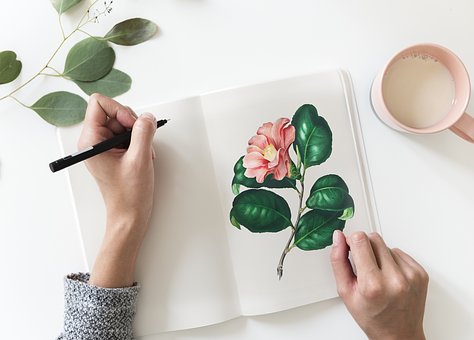
Source: pixabay.com
Art is a tremendous help to people who have mental health disorders such as anxiety, depression, bipolar disorder, attention deficit hyperactivity disorder, post-traumatic stress disorder, autism, and more. “Drawing, painting, or molding objects from clay has been scientifically proven to help people to deal with different kinds of trauma,” says Maria Cohut, PhD. It creates a healthy learning environment where there is room for improvement and wellness. It benefits people who are suffering from medical conditions not just psychologically but physically by promoting their healing process.
Studies reveal that patients who are doing art therapy show a significant improvement in their health compared to those who rely mainly on medications and aggressive interventions. For this reason, doctors use art as a complementary method in the treatment of patients with medical conditions.
Art therapy can contribute to severe medical health conditions such as cancer and heart problems. It is due to its benefits in diffusing stress which is one of the leading factors contributing to these diseases. It can also psychologically prepare patients who will undergo surgeries.
Art Therapies Used To Aid In Healing And Improvement Of Medical Conditions
Drawing
Drawing is a type of art which uses pencil, ink, charcoal, or markers to create details. Some mental health conditions such as autism can cause a person to do extraordinarily with his vision and memory, making him remember every aspect of an image in front of him.
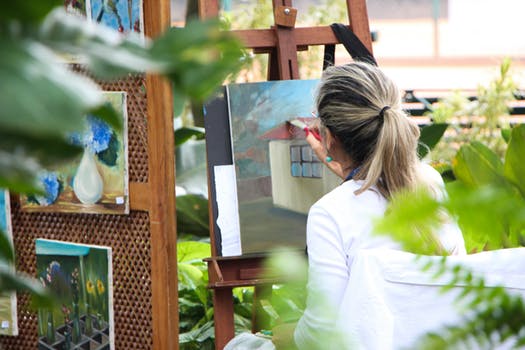
Source: pexels.com
Painting
Painting is an art which involves the use of different colors of paint to create images using paintbrushes or sometimes just the hand. It is an activity which allows patients to express their feelings and emotions freely. Sometimes, communication is a challenge for people with health conditions, and through the use of art, they can show what they confine within them. “[L]et go of results; create something that’s just for you in a drawing journal, a canvas, or whatever you have handy,” says Elizabeth Scott, MS.
Sculpting
Sculping is the use of clay, wood, or metal to mold, form, or shape an idea. The mind works with the hands to bring to life the feelings and emotions confined within a person. Whether he is happy, sad, angry, or frustrated, sculpting can be a tool to divert all the overwhelming feelings that are sometimes too much to handle.
Art can contribute to the healing and wellbeing of a person whether it is psychological or physical. That is why healthcare providers acknowledge it by prescribing and using it as an additional therapy for treating a condition.
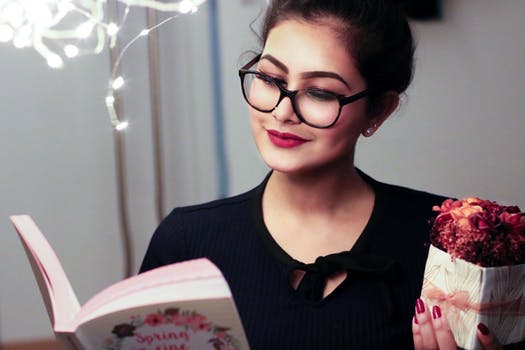
Source: pexels.com
How Art Works In Our Overall Wellness
- Art is vital as a tool for expressing oneself, and as already mentioned, some mental health conditions cause difficulty in communication. It allows for self-expression and breaks the barrier between a person and his environment. It creates a connection between the mind and the physical element of this world.
- Through art, a person can feel a sense of achievement and realize that there’s something beautiful that comes from his condition. It boosts self-esteem and self-worth making a patient understand that he is more than just his illness.
- Art promotes calmness and peace. It makes a person concentrate on one thing, avoiding distractions. It helps in diffusing stress that causes anxiety and depression. It relieves the mind with thoughts that can trigger depressive thoughts.
- Art promotes positivity. It diminishes frustrating and negative thoughts that can cause a person to feel sicker than he already is. It diverts the attention to good things rather than linger to the negativity of a condition. An ill person can continuously think about pain, missed opportunities, and mortality. Through art, the patient can consider positive thoughts and do worthwhile activities.
“In brief, creativity is increasingly being validated as a potent mind-body approach as well as a cost-effective intervention to address a variety of challenges throughout the lifespan,” says Cathy Malchiodi, PhD, LPCC.
Our overall well-being depends on how we see life in general. We are ill when we think we are. Through art, we develop a positive perspective that allows us to embrace life despite medical conditions. It makes us realize how extraordinary we can be even with our limitations.
When Art Symbolically Illustrates the Sufferings of the Mind
October 18, 2019
Art is the reflection of creativity and an outlet for stress. More than that, it is an expression of repressed emotions that can only be asserted through the stroke of a brush or the movement of a pen.
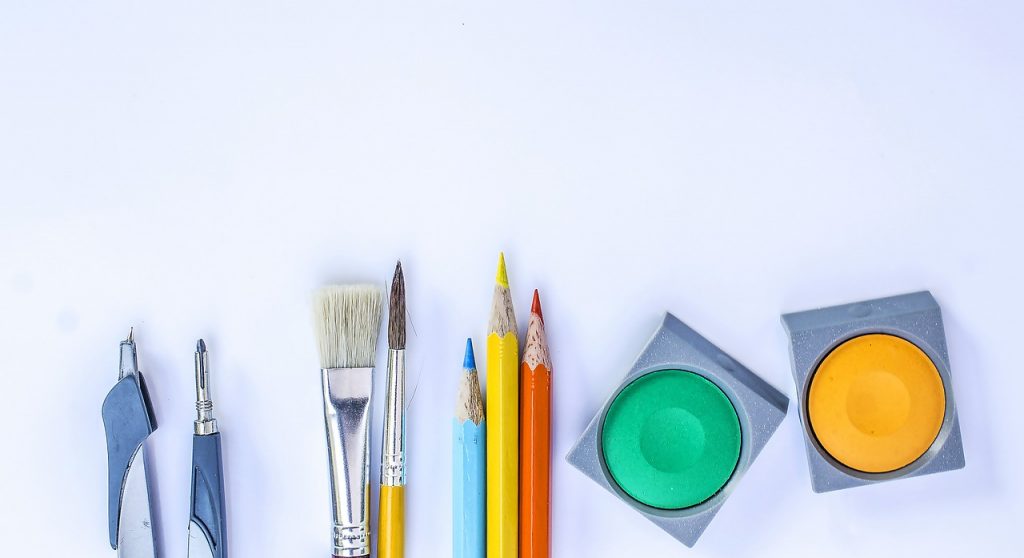
source: pixabay.com
The Influence Of Color To A Person’s Psychiatry
October 11, 2019
One area of psychiatry utilizes the method of understanding the different shades, leading to better understanding and identification of thought processes and emotions manifested by every individual. This is called color psychology.
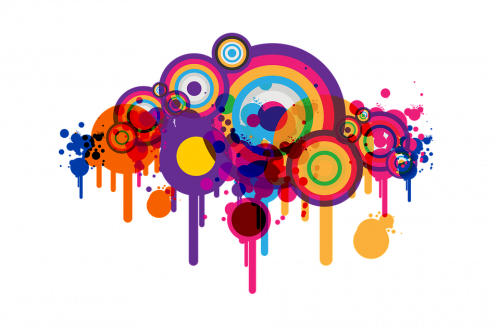
Source: pixabay.com
Color Defines How You Feel And Behave
When you enter a particular room, does the color affect your mood in some unexplainable manner? Does the sight of the shade make you feel relaxed or invigorated? Interior designers and artists have always believed that colors can significantly and dramatically affect a person’s mood and emotions which is why they are very particular with the type of shades that will be used in their craft.
In psychiatry, every color becomes a powerful tool that is utilized to communicate physiological and mental reactions non-verbally. Specific colors are also associated with physiological manifestations like eye strain, metabolism, and fluctuating blood pressure.
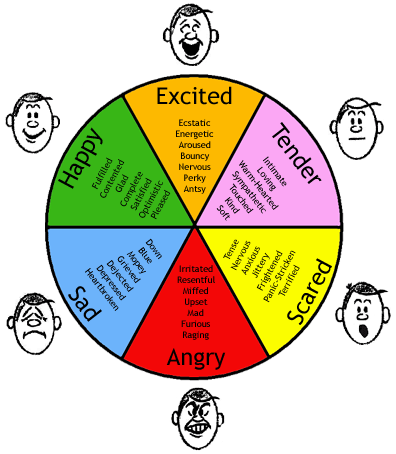
Source: wikimedia.org
How Color Speaks To Every Individual
Colors, though given specific universal meanings, are often subjective and are open to interpretation. For example, red is seen by others as the color of love, but for some, it’s a color of rage or anger. However, other shades of red evoke certain feelings of warmth, depending entirely on the spectrum the color it is affiliated to, such as red-orange or red-yellow.
Another example is blue which, for some signifies tranquility but for others, it’s the color of indifference or sadness. For licensed psychologist and journalist, Lisa Johnson Mandell, L.P., “Blue is the best color to put on to an interview because it sends out confidence and reliability. Therefore, many working uniforms or business suits are of blue color.”
Also, for Richard Shuster PsyD, a clinical psychologist, the color blue is helpful in calming our minds. He stated that “Staring at the ocean actually changes our brain waves’ frequency and puts us into a mild meditative state.” Mandell and Shuster’s statements show the differing meanings of colors.
Color perception primarily hinges on how an individual resonates with what they see and how the nostalgia of the hues make their mind react or interact. Aside from the examples provided above, what are the other usual colors that people respond to?
- Black – usually associated with mourning or death. Black is a color that represents a foreboding incident or a menacing symbol, and is also indicative of evil in some cases, mostly portrayed in pop culture or the cinemas. Black is commonly known as the opposite of white, which symbolizes negative energy.
- White – the opposite of black, which mainly represents positive energy. White is the universal symbol of peace and purity. In psychiatry, white is the preferred color in facilities so as not to provoke irrational feelings from admitted patients. White can also mean cleanliness and freshness. Designers often choose white backdrops to complement any highlight or color, even making the room seem spacious.
- Green–commonly associated with nature, green is a fresh color that represents good health, luck, and emotional tranquility. Science has suggested that green has a soothing and relaxing effect to the eyes, which is why when the eyes are strained, looking at something green is a common suggestion. Green is said to help people heal and relieve stress, and designers usually use this color to paint bedrooms and living rooms.
- Pink –being linked to femininity, romance, and love, pink, for some people, has a calming effect. Research has indicated that pink tends to have a particular impact on inmates or prisoners but then was soon found out that the soothing results are temporary and the reactions became more of agitation as they were exposed longer. Pink is also the color for qualities like compassion, softness, nurturing, and kindness.A consultant educational psychologist, Ingrid Collins, L.P., said that humans’ energy can be affected by chromatherapy also known as color therapy. She noted: “We are therefore at the most fundamental level made of energy and information, so when we add a particular colour we are adding energy into our lives.” Collins’ observation manifests the importance of color in humans’ everyday lives.
- Yellow–the first thing that would come to mind would be the color of the sun. Yellow is a bright color that often depicts warmth and cheerfulness, although due to its bright characteristic, this color can also cause eyestrain. Yellow can influence feelings of anger and frustration for some people. Due to its vibrancy, yellow can quickly capture the eyes, and for this reason, it’s the color used for advertisements or traffic signals.
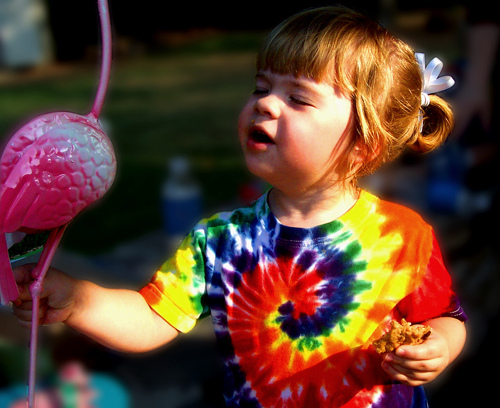
Source: flickr.com
Color Is Influential
What we see around us affects us differently; color plays a very significant part of what we do and how we feel. Depending on what the shade means to a person, it can convey powerful information, clout people’s decision, and create feelings and moods.
Exploring the Power of Creativity in Counseling: Healing Through Art and Imagination
October 4, 2019
This article will help you learn more about how art can work for most individuals. There’s something in art therapy that soothes the mind. The association is designing a serene, safe space for people where counselors can express memories that made significant changes in their lives, showcasing their skills and creativity in counseling.
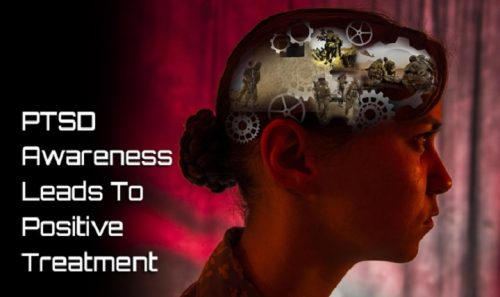
Source: health.mil
How Can Creativity Help Individuals?
Expression of arts through creativity in counseling engages a specific part of the brain that allows the processing of traumatic experiences in a different light. No wonder being artistic with treatment is required to handle such counseling profession cases.
Could The Use Of Arts Really Help Heal?
According to the Association for Creativity in Counseling (ACC), creative counseling for PTSD patients has been suggesting the use of ingenuity, such as music therapy or sand tray therapy, because this treatment method deals with repressed, traumatic memories that people, especially college students, usually have a hard time dealing with, leading to potential recovery and healing. It would be helpful for trauma patients to be treated in a lighter way. In addition, school counseling is also available for students. A school counselor or an approved continuing knowledge and education provider can help navigate the twists and turns in a student’s life.
The Use Of Creativity In The Counseling Process
PTSD is a kind of mental health condition that, according to statistics, is a widespread phenomenon that can be experienced by everyone, highlighting the importance of approaches to counseling. Counseling through ingenuity has a way of helping people with PTSD. There are lots of options using different creative approaches.
PTSD is caused by a traumatic experience like war, physical assault, or even verbal and emotional abuse are some examples of PTSD, as explained by Colleen Cira, PsyD, a psychologist who specializes in women and trauma.
Effects Of Creativity In Counseling
Although there are various forms of health counseling that could help ease up the nightmares that keep people with PTSD awake at night, including expressive arts therapies, help through imagination is a highly popular suggestion in the treatment field for particular reasons.
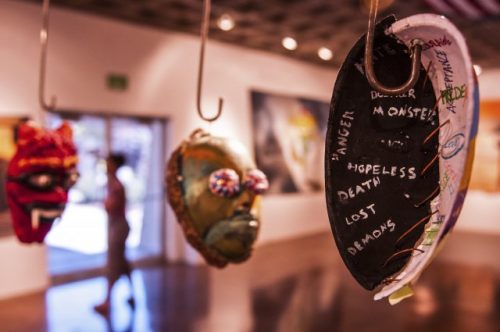
Source: army.mil
How Significant Is Imagination To Treatments And Therapy?
Art Breaks Unspeakable Bounds
A usual occurrence for people who have PTSD is the inability or hesitancy to discuss the incident verbally, even during sessions with a psych expert. Repressing emotions and thoughts is one of the main reasons why this aspect occurs on a deeper level. According to American Counseling Association, expressive arts programs or simply creative arts achieve more output than other treatments when dealing with PTSD patients because many transitions can be obtained even if words are not spoken. Arts is the medium that serves as a bridge between the traumatized person and the counselor. It supports creative techniques that increase creative endeavor.
Professionals Who Use Imaginative Approaches Help Clients In A Lot Of Ways
Joshua Smyth, Ph.D., wrote: The innovative therapies, as highlighted in the Journal of Creativity, are a diverse set of ingenuity in treatment techniques that hold in common that thoughts and feelings about trauma are represented without verbal descriptions of the event(s). Visual and auditory stimuli are used to symbolize the pain and suffering that result from trauma (such as fear, horror, loneliness, and distrust), and the process of expressing oneself is often more important than the finished product.
Does Creativity Work?
“Finding the words to express trauma is a common challenge for trauma survivors. Innovative arts counseling can bridge the shattered memory or painful emotion and a cognitive-linguistic expression of the traumatic experience,” said Marni Rosen, PsyD, a trauma counselor at the Post Traumatic Stress Center (PTSC) in New Haven, Connecticut.
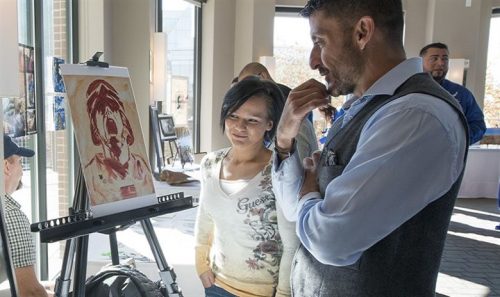
Source: defense.gov
Final Thoughts On Art As Explained By The Experts
The goal of a Counseling Association counselor is something to ponder. Clinical mental health experts in art believe that treatment by creative arts taps into the person’s unconscious memories and thoughts, resurfacing them so that individual members with PTSD can deal with them, ultimately expunging them from their minds and being healed in the process. Part of their supervision task focuses on keeping one’s mental and emotional health.
Frequently Asked Questions
What is information creativity in guidance and counseling?
“Creativity in guidance and counseling” involves using novel methods to assist people in understanding their emotions and experiences. It accelerates therapy and personal growth by using unconventional methods to encourage problem-solving, self-expression, and self-discovery.
Why should a counselor be creative in helping their clients?
They can better tailor their services to each client’s needs. Creative counseling techniques enable clients to tap into their mental imagination and explore new perspectives, making them more engaging, insightful, and effective in encouraging self-awareness, personal growth, and positive change.
Why is creativity important in therapy?
It is important in therapy because it offers alternative avenues for self-expression and exploration beyond traditional talk therapy. It can help individuals access deeper emotions, process traumatic experiences, gain new insights, and find innovative solutions to their challenges, ultimately fostering healing, personal growth, and a sense of empowerment.
What is creativity?
It is the ability to make fresh, valuable, and significant ideas, insights, and solutions, requiring thinking beyond the box. It connects seemingly unrelated concepts and addresses issues with a fresh viewpoint to develop innovative and imaginative results.
What is creativity good for?
It enhances life. Innovative problem-solving, personal growth and self-expression, adaptation and flexibility, critical thinking, collaboration and teamwork, and the discovery of new ideas and possibilities bring joy and contentment.
What is creative and therapeutic?
Life benefits from creativity. It promotes creative problem-solving, individual development, and self-expression, flexibility and adaptability, critical thinking, collaboration and teamwork, and happiness and fulfillment through exploring new ideas and opportunities.
What are the benefits of creativity?
These types of activities increase problem-solving, self-expression, happiness and well-being, stress, cognitive function, innovation and unconventional thinking, and fulfillment and satisfaction.
What is creativity in psychology?
Psychology defines creativity as the ability to make new, useful ideas, solutions, and expressions. It involves creatively blending knowledge, abilities, and experiences to create new and meaningful results, frequently with flexibility, fluency, originality, and elaboration.
Which is the most important factor of creativity?
Divergent thinking is often cited as a key aspect of creativity. Divergent thinking generates new ideas, explores possibilities, and thinks outside the box, resulting in distinctive and creative solutions or expressions.
What are the three constructs in establishing creativity in counseling?
The creativity in mental counselor’s capacity to provide a secure, non-judgmental space for clients to express their thoughts, feelings, and experiences is the first construct. Art therapy, expressive writing, and guided imagery are used to help clients express themselves and evolve. The third construct is the counselor-client collaborative connection, which fosters trust, openness, and shared discovery and encourages the client’s creative engagement and active participation in the therapeutic process.